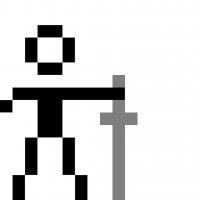However, for people were paying attention to the hardware market the last few years, it should have been fairly apparent that the $350 mark was a pipedream. The DK1 came close to being on budget, but by the DK2 they were already cutting corners to keep the cost down (and it's likely they took a loss on the hardware, regardless). With the further upgrades to the commercial unit, there was no way in hell they were bringing it in for that.
Once there are a body of games being developed for VR, they can probably start subsidising the hardware with game sales, but at this early stage, it is what it is.
Oh sure - if you know what the thing is you're not surprised. If all you're doing is listening to the marketing you're going to get sticker shock (which is on Oculus, who could have messaged better about it, but didn't, because marketing is hard).
That's not what I meant. I wanted to wait for the Vive to compare the two. I don't expect it to be cheaper.
I don't mind paying US$600 for a quality VR solution. I REALLY object to them tacking another $100 before shipping because... I dunno, they hate NZ or something? And as for $140 for shipping... unless John Carmack is delivering it by hand, that is completely fucking extortionate.
While I appreciate that in a lot of cases non-US countries get screwed by the conversion, I don't think that's what's going on here. It reads to me that they're getting hit by local taxes and are likely using insured shipping (even US shipping I hear is upwards of $50).
But I don't work for them or know where each dollar is going, so it's just speculation.
Is it high enough to get rid of the damnable screen door effect?
From my personal experience with the Vive devkit (which I am pretty sure uses the exact same resolution) the effect is not eliminated if you're looking for it and squinting, but it is minimized to the point of being unnoticeable in normal play and, more importantly, you can actually read text.
I think you are neglecting the "Apple factor", as we sometimes call it.
Is the market going to be small? Most likely. But it's a small market wherein every single member can afford to blow $600-$1,600 on novelty hardware.
That's the kind of market I want to be selling things to...
Yeah - I think this will help.
You can either put your game on Steam, iOS, Android and the like where it will be lost in a giant sea of free-to-play mediocrity, hoping you snag enough "whales" to stay afloat.
Or you can be one of 100 games that comes out for the hardware this year for customers with proven disposable income.
You certainly aren't going to get any AAA titles to run on [PS|VR], because those struggle to run at 30 fps on 720p/1080p when you need 75 fps or higher at a potentially higher resolution.
Not existing, non-VR titles, no... but future AAA titles, sure.
Some AAA games already choose to ship at 1080p 60Hz as an up-front design choice. Others choose 30Hz and/or 720p (or in-between values). This choice is usually made at the start of a project, and all other tech decisions afterwards are made to meet this constraint.
Every PSVR game has to choose 120Hz and dual 1080p as a forced design choice, and then works out the rest from there. Yes, that means your shaders have to be 4x or even 8x as fast... That's a design choice that VR games will deal / are dealing with. PSVR games will have simpler and/or more static scenes, at least to begin with, compared to current PS4 titles.
Yeah, which is kind of my point.
Most large AAA companies are more concerned about how good a screenshot looks than how it plays, and consumers have proven they will accept low resolution low framerate games if they look pretty enough (The Order 1888 notwithstanding).
Devs who design with it in mind, that basically start with the expectation of rending 75fps per eye or higher, will work, but what graphical sacrifices are going to have to be made to hit it? And will people care enough? See Halo 5 for how people complained about loss of split screen in order to hit 60fps (because the dev didn't want to sacrifice graphical fidelity to render a split screen).
Maybe the real solution here is to double-down on non-realistic rendering styles to make up for the loss of horsepower. Because customers time and time again have proven they don't care why one game looks "worse" than another one, just that it does.













